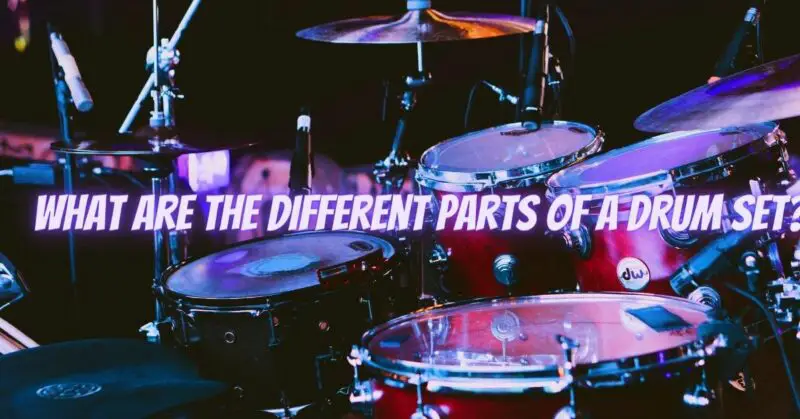The drum set, also known as a drum kit, is a versatile and essential instrument in various music genres. It consists of several components that work together to create rhythm and percussive sounds. Whether you’re a beginner drummer or a music enthusiast, understanding the different parts of a drum set is crucial. In this article, we will explore the various components that make up a standard drum set, providing an overview of each part’s purpose and contribution to the overall sound.
- Bass Drum: The bass drum, also called the kick drum, is the largest drum in the set. It is played with a foot-operated pedal and produces a deep and low-pitched sound. The bass drum provides the rhythmic foundation and pulse of the music, often emphasizing the downbeats. It is typically positioned on the floor, angled slightly away from the drummer.
- Snare Drum: The snare drum is a versatile and central component of the drum set. It consists of a shallow drum shell with a set of snare wires stretched across the bottom head. The snare drum produces a distinct cracking sound and is played with drumsticks or brushes. It is positioned between the drummer’s legs, usually at waist height, and is often used for accenting beats, playing ghost notes, and providing a snappy backbeat.
- Toms: Toms, also known as tom-toms or toms drums, are cylindrical drums of varying sizes and pitches. They are positioned above the bass drum and are played with drumsticks. Toms contribute to the melodic and textural elements of drumming. The number of toms can vary, but a standard drum set typically includes two or more floor toms and one or two rack toms.
- Hi-Hat: The hi-hat consists of two cymbals mounted on a stand that allows them to be played together or separately. It is operated by a foot pedal, similar to the bass drum pedal. By pressing the pedal, the cymbals come together to produce a crisp and sharp sound. The hi-hat is crucial for creating rhythms and adding dynamic variation to the music. It can be played with sticks, brushes, or by pressing the cymbals together using the foot pedal.
- Ride Cymbal: The ride cymbal is a large cymbal that produces a sustained and shimmering sound. It is usually positioned on a cymbal stand to the right side of the drummer. The ride cymbal is played with drumsticks and is used for creating a steady ride pattern, providing a rhythmic foundation, and adding texture and accents to the music.
- Crash Cymbals: Crash cymbals are large cymbals that produce a loud and explosive sound when struck together. They are used for dramatic accents, fills, and to mark the beginning or end of a section in the music. Crash cymbals are positioned on individual cymbal stands, typically placed on the left side of the drummer.
- Hi-Hat Pedal: The hi-hat pedal is an essential part of the drum set, allowing the drummer to control the opening and closing of the hi-hat cymbals. By manipulating the pedal, the drummer can produce a range of sounds, from tight and closed to loose and open. The hi-hat pedal is operated with the foot, allowing for simultaneous play with the hands.
- Hardware: In addition to the drums and cymbals, a drum set includes various hardware components that hold the drums and cymbals in place. This includes stands for the snare drum, toms, cymbals, and hi-hat, as well as a bass drum pedal. The hardware provides stability and adjustability, allowing drummers to position the components according to their preferences and playing style.
Conclusion: The drum set comprises various components that work harmoniously to create rhythm, texture, and dynamics in music. Understanding the different parts of a drum set, including the bass drum, snare drum, toms, hi-hat, cymbals, and hardware, is crucial for aspiring drummers and music enthusiasts. Each component contributes to the overall sound and functionality of the drum set, providing the drummer with a versatile instrument to express their creativity and drive the rhythm of the music.


